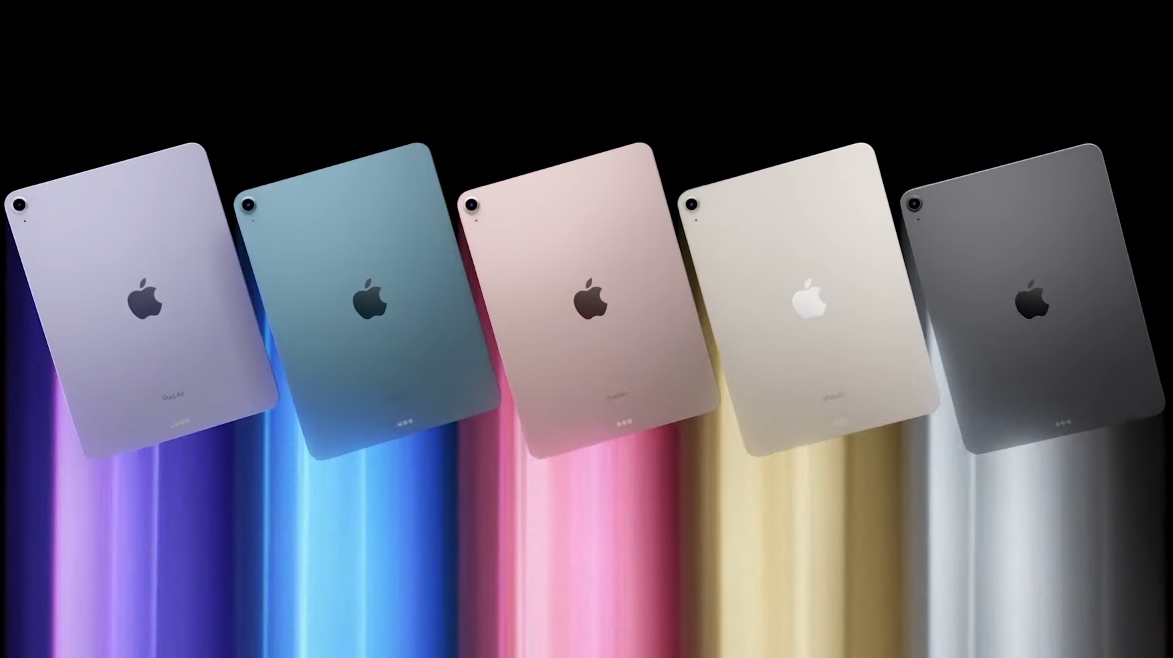The M1 iPad Air is just as powerful as the iPad Pro, but professionals won't love it
Apple's M1-powered iPad Air looks the part, but it's not a pro device

Apple’s new M1-powered iPad Air is a thin, powerful, and truly versatile tablet that will probably let professionals down.
I know, it can be confusing. The 10.9-inch slab features the exact same Apple Silicon M1 chip as the 11-inch iPad Pro. They even run at the same 3.20 GHz clock speed and are similarly backed by 8 GB of RAM.
What you get on with an iPad Pro (M1)
-ProMotion Technology
-The TrueDepth module and Face ID
--Quad speakers
Two rear cameras (wide and ultrawide)
-LiDAR
--Memory options up to 16GB
Storage options up to 2TB
-Thunderbolt 4
It’s not just the components, these two tablets look alike, at least from the front. However, to understand why the iPad Air is a more affordable tablet intended for creative types but not necessarily professionals, you have to look at what’s included in the Pro line and what’s missing on the new iPad Air.
The M1 Apple iPad Air is no slouch in most of these departments, but the specs are obviously engineered for a different class of user.
The question is not so much of what you can do on the iPad Air (2022). The M1 chip performs similarly on both tablets. It has formidable power for CPU-intensive tasks like web browsing, document creation, and significant headroom when it comes to graphics-intensive tasks like 4K video rendering
But the collection of content for some of these tasks is limited by the single decent but not stellar 12 MP rear camera. Without the LiDAR scanner, you can’t collect detailed 3D maps of your surroundings or 3D objects you want to capture and paint in 3D in Procreate.
Get daily insight, inspiration and deals in your inbox
Sign up for breaking news, reviews, opinion, top tech deals, and more.
The iPad Air (2022) has:
A single 12MP Wide rear camera
A 12MP ultrawide front-facing camera
Stereo speakers
Storage maximum of 256GB
Maximum 8GB RAM
A USB-C connector
Yes, you’ll shoot 4K video, but even if you spend more for the 256GB ($749) model, you could quickly run out of space. Video editors need so much more storage than this.
The iPad Air 11’s Liquid Retina display is colorful and 500 nits bright, but it’s not in the same class as the iPad Pro’s 11-inch and slightly higher-resolution display (2388x1668 vs. 2369 x 1640). At 600 nits it’s brighter than the iPad Air’s panel, but it’s the addition of ProMotion that makes, pardon the phrase, the Pro difference. The smooth motion of up to 120Hz refresh rates and its ability to clock down and conserve energy when the screen doesn’t need as many refresh cycles is something pros need (for more hours of on-the go work) and need for quality imaging on motion graphics work.
Both iPads feature a USB-C port for power and data, but only the iPad Pro offers Thunderbolt 4 connectivity. That’s 40Gbps of throughput, critical for uploading 4K (maybe even 8K) video and for efficiently using external storage devices.
The True Depth module and Face ID isn’t necessarily a pro-feature, but then busy professionals might appreciate the hands-free speed of unlocking and logging in with just their face (the iPad Air has a nice Touch ID button on the side). Plus, that front-facing depth-sensing technology can come in handy for some pro tasks that require AR.
On the speaker front, the M1 Apple iPad Air’s stereo speaker system is more than acceptable for video consumption and gameplay, but Pros will crave the power and clarity of the four-speaker system on the iPad Pro.
It’s not that we don’t recommend the M1 iPad Air. We do. Our Global Editor in Chief Gareth Beavis really liked it and I spent a wonderful 24-hours with it, but it’s not the tablet for everyone and every use case.
If you’re wondering why you’d pay $200 more for an entry-level iPad Pro, this is your answer. For those whose needs run on the Pro side, the M1 iPad Air offers the power but lacks many of the key features you’ll crave for getting the pro-level work done.

A 38-year industry veteran and award-winning journalist, Lance has covered technology since PCs were the size of suitcases and “on line” meant “waiting.” He’s a former Lifewire Editor-in-Chief, Mashable Editor-in-Chief, and, before that, Editor in Chief of PCMag.com and Senior Vice President of Content for Ziff Davis, Inc. He also wrote a popular, weekly tech column for Medium called The Upgrade.
Lance Ulanoff makes frequent appearances on national, international, and local news programs including Live with Kelly and Mark, the Today Show, Good Morning America, CNBC, CNN, and the BBC.